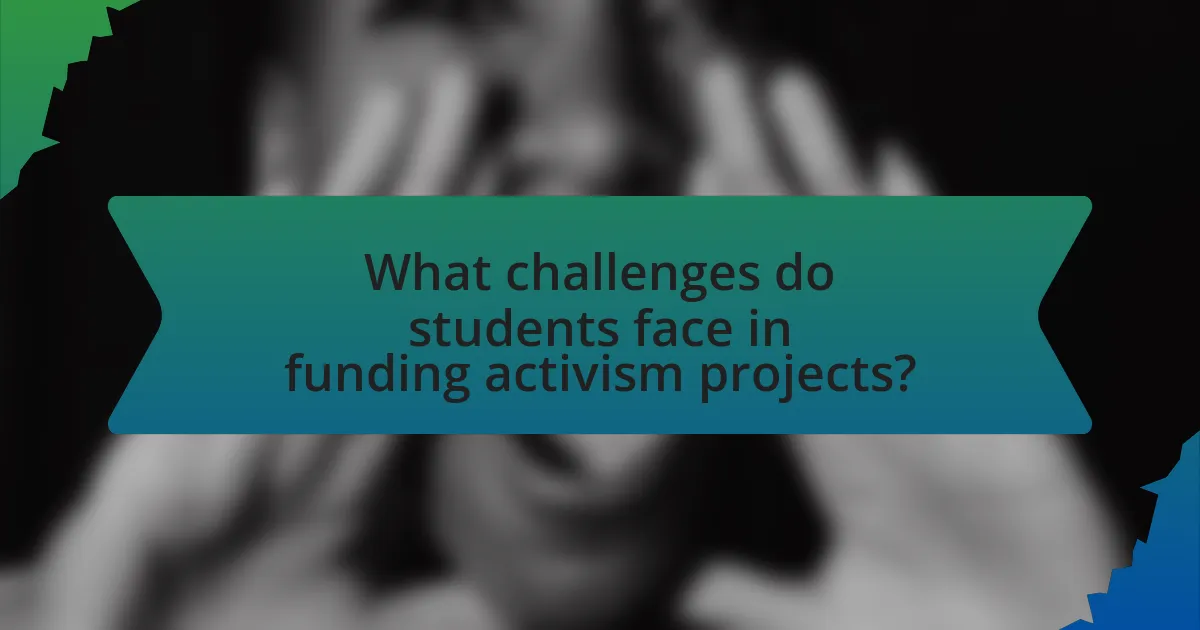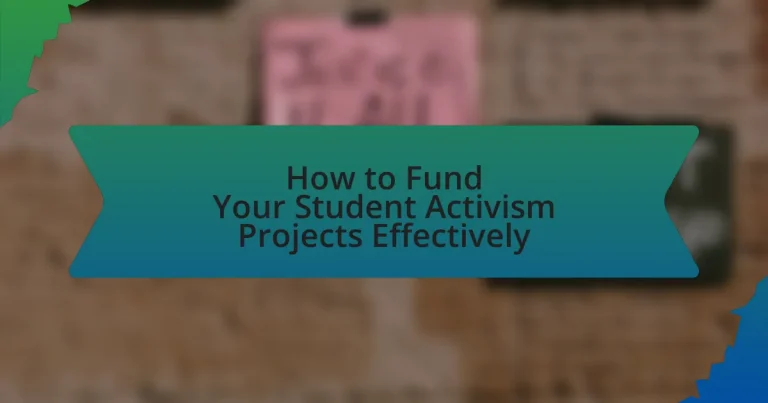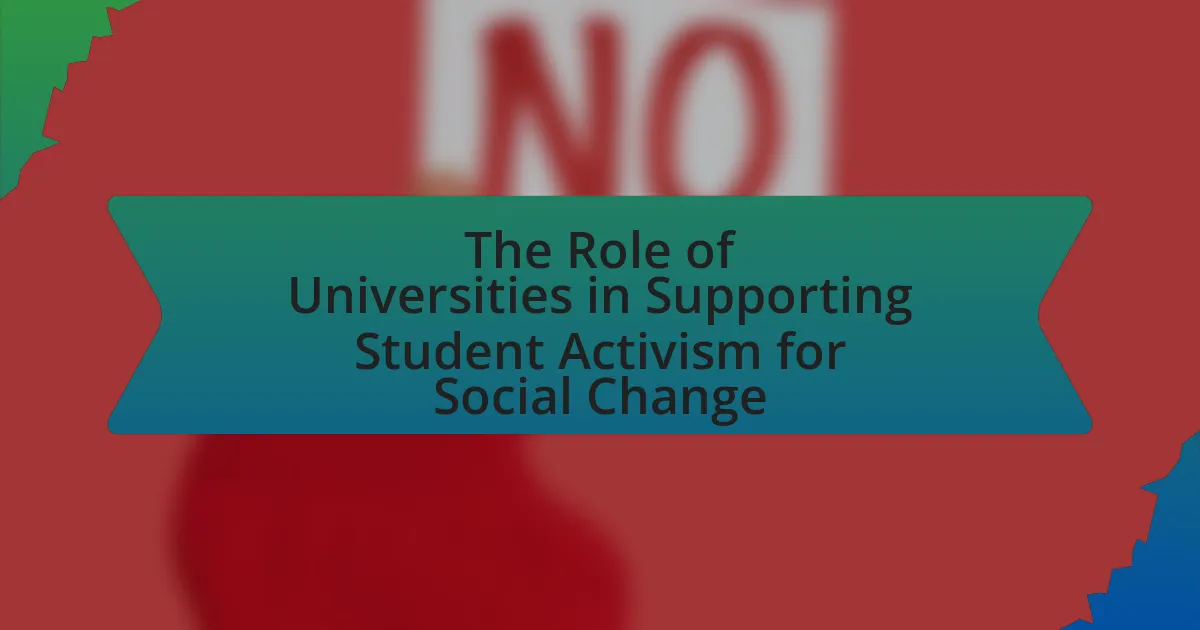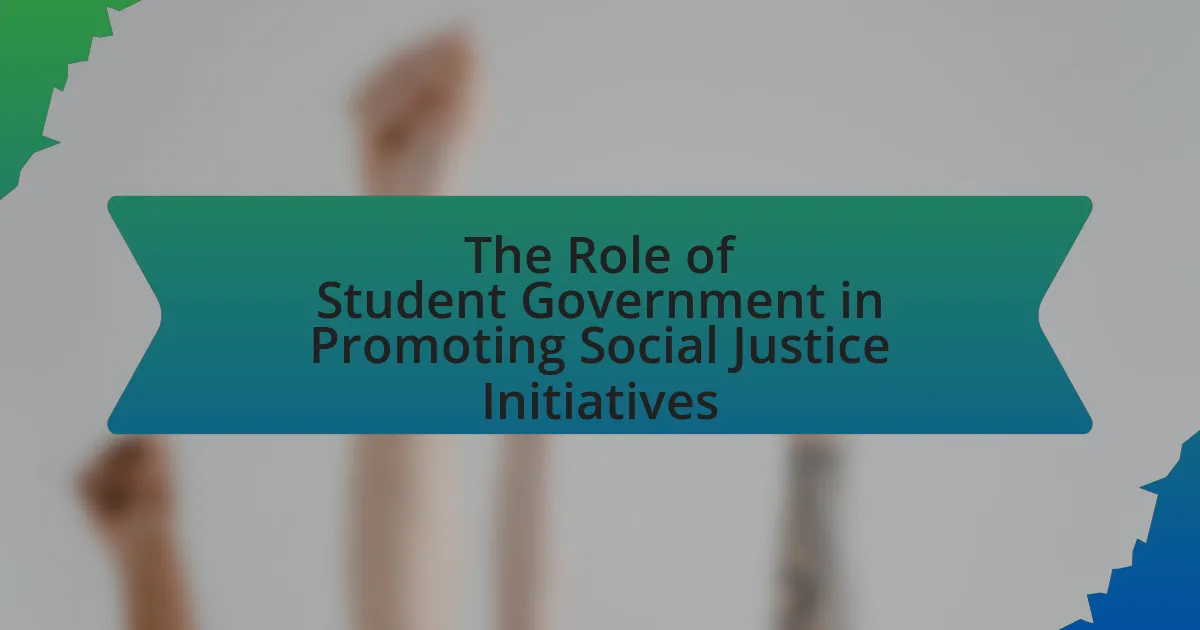The article focuses on effective strategies for funding student activism projects, emphasizing key aspects such as identifying funding sources, creating detailed budgets, and developing compelling proposals. It outlines various funding options available to students, including grants, crowdfunding, and university resources, while also addressing common challenges faced in securing financial support. Additionally, the article highlights the importance of transparency, accountability, and networking in the fundraising process, providing best practices and tips for maximizing fundraising potential through storytelling and collaboration with other organizations.

What are the key aspects of funding student activism projects?
The key aspects of funding student activism projects include identifying funding sources, creating a detailed budget, and developing a compelling proposal. Funding sources can range from university grants, local businesses, crowdfunding platforms, and nonprofit organizations that support student initiatives. A detailed budget outlines all anticipated expenses, ensuring transparency and accountability, which is crucial for gaining trust from potential funders. Developing a compelling proposal involves clearly articulating the project’s goals, impact, and the need for funding, which can significantly increase the chances of securing financial support. For instance, a study by the National Student Association found that projects with well-defined objectives and clear financial plans are 70% more likely to receive funding compared to those without.
How can students identify potential funding sources?
Students can identify potential funding sources by researching grants, scholarships, and sponsorships specifically aimed at student initiatives. They should utilize online databases such as Fastweb and Grants.gov, which list various funding opportunities tailored for educational projects. Additionally, students can connect with their university’s financial aid office or student affairs department, which often have resources and information on available funding. Networking with local businesses and community organizations can also yield sponsorship opportunities, as many are willing to support student-led projects that benefit the community.
What types of funding sources are available for student activism?
Various funding sources are available for student activism, including grants, crowdfunding, university funding, sponsorships, and donations from individuals or organizations. Grants can be obtained from foundations that support social justice initiatives, such as the Open Society Foundations, which provides funding for projects that promote democracy and human rights. Crowdfunding platforms like GoFundMe allow students to raise money directly from their communities for specific projects. Many universities offer funding through student government or specific departments to support student-led initiatives. Sponsorships from local businesses can also provide financial support in exchange for visibility or partnership. Additionally, individual donations can be solicited through social media campaigns or fundraising events, enabling activists to gather resources for their causes.
How can students leverage university resources for funding?
Students can leverage university resources for funding by applying for grants, scholarships, and financial aid offered by their institutions. Many universities provide specific funding opportunities for student-led projects, including activism initiatives, through dedicated offices such as the student affairs or financial aid departments. For example, the University of California system allocates millions annually for student projects, demonstrating a commitment to supporting student activism. Additionally, students can collaborate with faculty or departments that align with their project goals to access departmental funds or sponsorships.
What strategies can enhance fundraising efforts?
To enhance fundraising efforts, organizations should implement targeted outreach strategies, such as leveraging social media platforms to engage potential donors. Research indicates that campaigns utilizing social media can increase donations by up to 30%, as they allow for direct interaction and storytelling that resonates with audiences. Additionally, hosting community events can foster relationships and encourage local support, with studies showing that in-person engagement often leads to higher donation rates. Furthermore, establishing recurring donation programs can create a steady revenue stream, as data reveals that recurring donors contribute 42% more annually than one-time donors.
How can students create compelling proposals for funding?
Students can create compelling proposals for funding by clearly defining their project goals, demonstrating the project’s impact, and providing a detailed budget. A well-structured proposal includes an engaging executive summary, a thorough explanation of the project’s significance, and evidence of community support or collaboration. Research indicates that proposals with specific, measurable outcomes are more likely to receive funding; for instance, a study by the National Council of Nonprofits found that funders prioritize clarity and feasibility in project descriptions. Additionally, including testimonials or data that highlight the need for the project can strengthen the proposal’s appeal.
What role does networking play in securing funds?
Networking is crucial in securing funds as it facilitates connections with potential donors, investors, and supporters. By building relationships within relevant communities, individuals can access opportunities for funding that may not be publicly advertised. Research indicates that 70% of jobs and funding opportunities are obtained through networking, highlighting its effectiveness in creating pathways to financial support. Additionally, personal referrals and endorsements from trusted contacts can significantly enhance credibility, making it easier to attract funding for student activism projects.

What challenges do students face in funding activism projects?
Students face significant challenges in funding activism projects, primarily due to limited financial resources and lack of access to funding opportunities. Many students rely on personal funds or small contributions from peers, which often fall short of project needs. Additionally, students may encounter difficulties in navigating grant applications or securing sponsorships, as many funding bodies prioritize established organizations over student-led initiatives. Research indicates that only 30% of student organizations successfully secure external funding, highlighting the competitive nature of available resources. Furthermore, students often lack experience in fundraising strategies, which can hinder their ability to effectively gather support for their projects.
How can students overcome common funding obstacles?
Students can overcome common funding obstacles by actively seeking diverse funding sources, such as grants, crowdfunding, and sponsorships. Research indicates that student organizations that apply for multiple grants increase their chances of securing funding; for instance, the National Association of Student Personnel Administrators reports that organizations that pursue at least three funding avenues are 60% more likely to receive financial support. Additionally, leveraging social media for crowdfunding campaigns can attract small donations from a wider audience, enhancing financial viability. Engaging local businesses for sponsorships can also provide necessary resources while fostering community partnerships.
What are the most frequent barriers to obtaining funding?
The most frequent barriers to obtaining funding include lack of clear project proposals, insufficient networking, and limited understanding of funding sources. Clear project proposals are essential as they communicate the goals and impact of the initiative, and without them, potential funders may not see the value in supporting the project. Insufficient networking limits access to potential funders and opportunities, as many funding sources rely on personal connections and recommendations. Additionally, a limited understanding of funding sources can lead to missed opportunities, as activists may not be aware of available grants or sponsorships that align with their projects. These barriers are commonly identified in studies on funding challenges faced by student activists and organizations.
How can students address funding rejections effectively?
Students can address funding rejections effectively by analyzing the feedback provided, revising their proposals, and seeking alternative funding sources. Analyzing feedback helps students understand the reasons for rejection, allowing them to improve their future applications. Revising proposals based on this feedback can enhance clarity, alignment with funder priorities, and overall quality. Additionally, exploring alternative funding sources, such as local businesses, crowdfunding platforms, or university grants, can increase the chances of securing necessary funds. Research indicates that students who adapt their proposals based on feedback and diversify their funding strategies are more likely to succeed in future applications.
Why is transparency important in fundraising?
Transparency is important in fundraising because it builds trust between donors and organizations. When organizations clearly communicate how funds are raised and allocated, donors feel more confident that their contributions are being used effectively. Research indicates that 85% of donors are more likely to give to organizations that demonstrate transparency in their financial practices. This trust can lead to increased donations and long-term support, as transparency fosters accountability and encourages donor engagement.
How can students ensure accountability in their funding processes?
Students can ensure accountability in their funding processes by establishing clear guidelines and transparent reporting mechanisms. Implementing a budget plan that outlines expected expenses and income sources allows students to track financial activities effectively. Regular audits and reviews of funding allocations can further enhance transparency, ensuring that funds are used as intended. Research indicates that organizations with structured financial oversight report higher levels of trust and accountability among stakeholders, reinforcing the importance of these practices in student funding initiatives.
What are the consequences of mismanaging funds?
Mismanaging funds can lead to severe financial instability and project failure. When funds are not allocated properly, it can result in insufficient resources to complete initiatives, leading to unmet goals and wasted efforts. Additionally, mismanagement can damage the credibility of the organization, causing a loss of trust among stakeholders and potential donors. According to a study by the Nonprofit Finance Fund, 60% of nonprofits reported financial challenges due to poor fund management, which directly impacts their ability to serve their communities effectively.

What best practices should students follow for effective funding?
Students should follow a structured approach to secure effective funding for their activism projects. This includes identifying clear project goals, creating a detailed budget, and researching potential funding sources such as grants, sponsorships, and crowdfunding platforms. According to the National Association of Student Personnel Administrators, students who present a well-defined project plan and budget are 70% more likely to receive funding compared to those who do not. Additionally, networking with local organizations and leveraging social media for outreach can enhance visibility and support, further increasing funding opportunities.
How can students develop a sustainable funding plan?
Students can develop a sustainable funding plan by identifying diverse funding sources, creating a detailed budget, and establishing a clear fundraising strategy. By researching grants, scholarships, sponsorships, and crowdfunding platforms, students can secure financial support from multiple avenues. A detailed budget helps in understanding the financial requirements of their projects, ensuring that funds are allocated efficiently. Additionally, a clear fundraising strategy, which includes timelines and specific goals, can enhance the effectiveness of their efforts. According to a study by the National Association of Student Financial Aid Administrators, students who utilize multiple funding sources are more likely to achieve financial sustainability in their projects.
What elements should be included in a funding strategy?
A funding strategy should include clear objectives, target funding sources, a detailed budget, a timeline, and a communication plan. Clear objectives define the purpose and goals of the funding effort, ensuring alignment with the project’s mission. Identifying target funding sources, such as grants, donations, or crowdfunding platforms, helps in focusing efforts on the most viable options. A detailed budget outlines the financial requirements, providing transparency and accountability. Establishing a timeline ensures that funding efforts are organized and timely, while a communication plan facilitates outreach and engagement with potential funders. These elements collectively enhance the effectiveness of securing funding for student activism projects.
How can students evaluate the success of their funding efforts?
Students can evaluate the success of their funding efforts by measuring the outcomes against their initial goals and objectives. This involves assessing whether the funds raised met the financial targets set for specific projects, analyzing the impact of the funded activities on the intended audience, and gathering feedback from participants and stakeholders. For example, if a student organization aimed to raise $5,000 for a community event and successfully raised that amount, they can consider this a success. Additionally, if the event attracted a significant number of attendees and received positive feedback, these metrics further validate the effectiveness of their funding efforts.
What tips can help students maximize their fundraising potential?
To maximize their fundraising potential, students should focus on creating a compelling narrative that connects their cause to potential donors. This approach is supported by research indicating that emotional storytelling can increase donor engagement and contributions. Additionally, students should leverage social media platforms to reach a wider audience, as studies show that campaigns promoted through social media can raise up to 50% more funds than those that do not utilize these channels. Furthermore, organizing events that encourage community participation can enhance visibility and support, as community-driven initiatives often attract more donations. By implementing these strategies, students can significantly enhance their fundraising outcomes.
How can storytelling enhance fundraising campaigns?
Storytelling enhances fundraising campaigns by creating emotional connections that motivate donors to contribute. When organizations share compelling narratives about their mission, impact, and the individuals they serve, they engage potential supporters on a personal level. Research indicates that campaigns utilizing storytelling can increase donations by up to 300%, as emotional appeals resonate more deeply than mere statistics or facts. For example, a study by the Stanford Graduate School of Business found that stories can significantly improve the likelihood of donations, as they help donors visualize the impact of their contributions. This emotional engagement not only drives immediate financial support but also fosters long-term relationships with donors, leading to sustained funding for future initiatives.
What are the benefits of collaborating with other organizations?
Collaborating with other organizations enhances resource sharing, which can lead to increased funding opportunities and access to diverse expertise. This collaboration allows organizations to pool financial resources, thereby reducing individual costs and maximizing project impact. For instance, a study by the National Council of Nonprofits found that organizations that collaborate can increase their funding by up to 30% through joint grant applications. Additionally, partnerships can foster innovation by combining different perspectives and skills, ultimately leading to more effective activism strategies.




